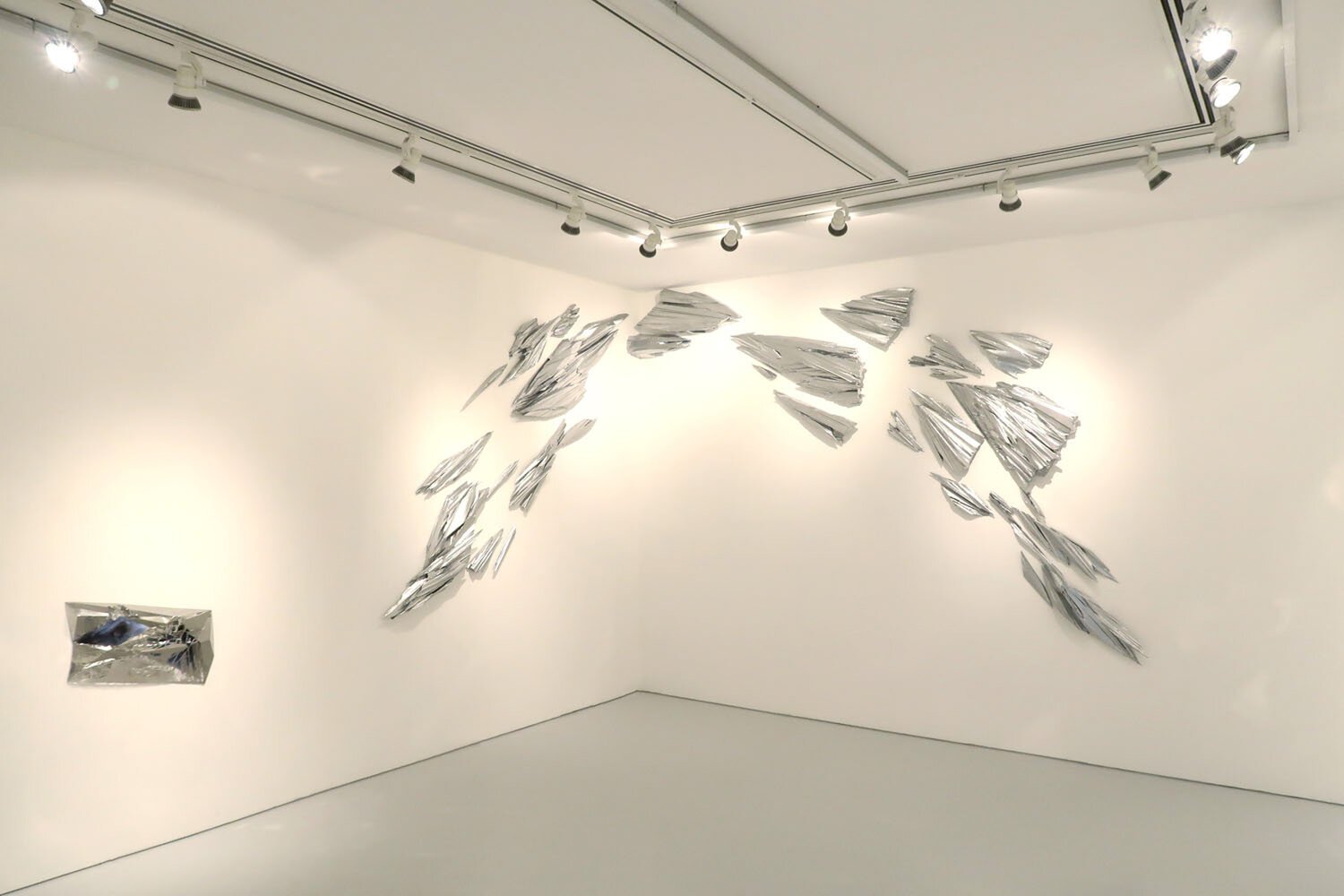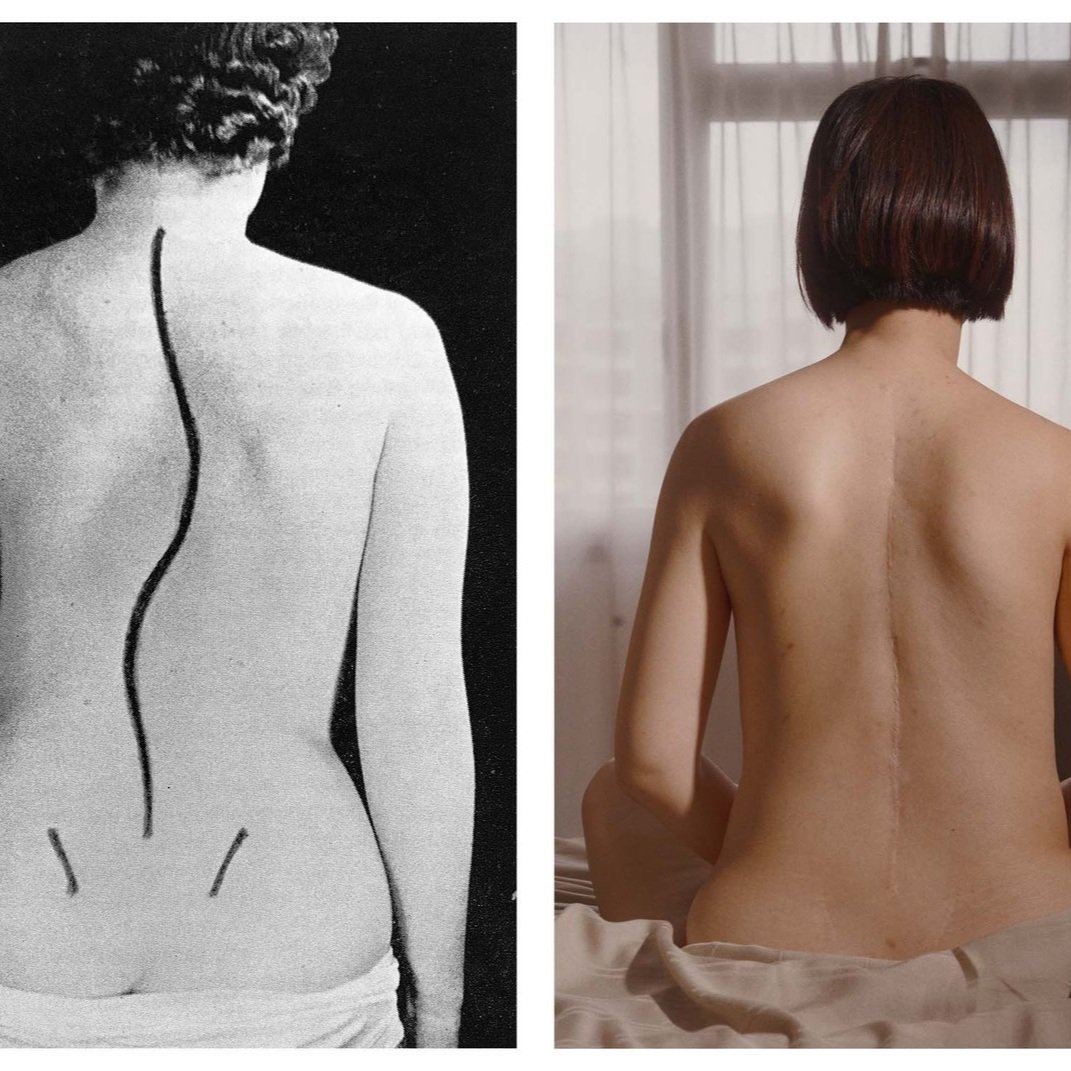Melissa Tan at Richard Koh Fine Art
Sculptures and installation in ‘Under the Arched Sky’
By Ian Tee
Melissa Tan, 'Proserpina' (detail), 2019, mirror finish stainless steel and epoxy resin, 90 x 73 x 10.3 cm. Image courtesy of the artist and RKFA.
Melissa Tan finds beauty in the fleeting and ephemeral, a witness to the effects of time in nature and the built environment. In her work, the textures of rocks and geographical elements are materialised in a variety of ways from delicate paper-cuts, to sound and laser-cut metal.
Marking a shift from the landscape into the architectural, the Singaporean artist's fourth solo exhibition at Richard Koh Fine Art (RKFA) focuses on the keystone as a metaphor for a woman's resolute strength. Titled 'Under the Arched Sky', the show features seven wall-bound sculptures and an extensive installation. Melissa shares the ideas and narratives behind this new body of work in a brief interview below.
Melissa Tan, 'Hekate', 2019, mirror finish stainless steel and epoxy resin, 81 x 57 x 10.5 cm. Image courtesy of the artist and RKFA.
Beyond giving the works the names of goddesses, how can we further understand the works through these characters or their stories?
I embedded an image of what represents each goddess in all the works. For example, statues of Hekate are often depicted as a tri-goddess carrying twin torches. She governs all that is associated with the night, moon, magic, necromancy and witchcraft. Hekate is also goddess of crossroads. Hence, I chose to cast road fragments that had an onyx-like colour for the resin pieces.
In one story, Hekate aided Ceres, goddess of the harvest, in the search for her daughter Proserpina. I decided to use the image of twin torches in the work as a reference to the ones Hekate held while guiding Ceres. The myth ends with Hekate staying as Proserpina’s companion in the underworld.
The interesting thing I found about Hekate is that she is able to move between the borders of life and death easily. These goddesses are called liminal deities and only a select few have the ability to do so at will. I thought the characteristics of crossing borders and inhabiting multiple roles at once to be very similar to a woman’s role in society today. These works are about women who reside in different domains and straddle boundaries of convention.
How have the different materials come together in the making of the mixed-media pieces? What was one difficulty you faced?
For this body of work, I used epoxy resin and combined it with metal. Resin is a material we use so extensively today, especially in construction. It is part of our buildings, in flooring, countertops etc. I thought it would be interesting to make them look like natural stone or even gems.
There is a new classification of rocks called anthropic rock, that is made and modified by humans. US geologist James Ross Underwood Jr advocated for this fourth class of rock to be added to Earth and planetary material studies as he felt these materials would last for long periods of time. To me, resin is a material that represents the time we are in, and access to such contemporary materials also shapes the works created.
Resin starts off as a liquid. A difficulty I faced was in trying to merge the two materials. Vessels or moulds were made to hold the liquid resin while it cured and solidified. After curing, the material is incredibly strong and durable. The resin also has a glass-like quality that went unexpectedly well with the mirror-finish stainless steel.
Melissa Tan, 'Under the Arched Sky', 2019, exhibition installation view. Image courtesy of the artist and RKFA.
What was the idea behind the installation 'Under the Arched Sky'? And how does it work with the seven wall-bound pieces?
I was looking at architectural arches and its keystone, which is the stone at the apex. The way a keystone holds the entire structure together is parallel to the way I see women as an integral part of society, bearing weight and holding everything in place. The installation is an arch that stretches over, symbolising a bridge. The wall-bound pieces are like "star maps" that indicate the location of each asteroid. The wall sculptures are hung at different heights so it looked as if they are scattered in the sky.
I like the idea that roman arches and enclaves contain marble statues of the gods and goddesses. Thus, it felt apt to create a large installation that housed the works.
How does this solo persist from/expand on your previous work? What have you continued to explore in terms of ideas/techniques and what have you been more experimental with?
There are so many narratives in this show which are rich and well-known. I was worried that it would be difficult for me to talk about them or contribute more to these stories. Yet at the same time, I loved reading them again and again. Samantha Yap, who wrote for my previous show, introduced me to Natsuo Kirino’s 'The Goddess Chronicle'. It is a retelling of Izanami’s tale which gave an exciting, contemporary perspective of the myth. Working with writer friends like Samantha and Euginia Tan has broadened my perception of things. This wonderful exchange between imagery and words has made the process of creating much richer. At the same time, it has also opened up possibilities of shaping them into something unexpected.
In terms of techniques, I have been trying to learn new ways of working with metal. Recently, I worked with an architect friend who helped me push from flat two-dimensional metal into a more sculptural form. It was challenging but necessary to learn to use different software and combine different techniques. With each series, I hope to explore new ways of working, and as Euginia wrote at the end of her catalogue essay: “We react with whatever means we can."
'Under the Arched Sky' is on view from 22 November to 7 December 2019 at RKFA, Singapore.
















